How To Ace Your OSCE Exam: Techniques Station
In this station, you‘re going to be asked to perform specific techniques. You have to physically perform the techniques and explain the use and benefit of them. READ the stem…READ the stem….READ THE STEM!
Also make sure you warm up the tissue before starting the primary technique and to close the treatment with an appropriate finishing technique.
Here's an example of some techniques to prep for:
Fascial Techniques
-
Indications and Contraindications:
- Indications: Restricted movement, chronic pain.
- Contraindications: Acute inflammation, fragile skin.
-
Warm-Up Technique:
- Perform effleurage to warm up the tissue and assess its condition.
-
Assessment:
- Move the fascia to assess for any restrictions. "I’m feeling for any tight or restricted areas."
-
Performing the Technique:
- Use two different fascial techniques (e.g., skin rolling and myofascial release).
- "Now I will perform skin rolling to loosen the fascia and follow with myofascial release."
-
Post-Evaluation:
- Reassess the tissue to determine any changes or improvements.
-
Closing Technique:
- Finish with effleurage to soothe the area.
-
Communication:
- Negotiate intensity (0-10 scale).
- Inform the client they may feel burning or pulling of the skin.
Stimulating Tapotement
-
Indications and Contraindications:
- Indications: Muscle fatigue, decreased muscle tone.
- Contraindications: Acute injuries, fragile blood vessels.
-
Warm-Up Technique:
- Perform effleurage to prepare the muscle.
-
Stimulating Technique:
- Move on to a stimulating technique like vibrations or shaking.
- Apply the technique to the indicated muscle with proper direction and light pressure.
-
Finishing Technique:
- Finish with body rocking to generalize the stimulation.
-
Communication:
- Check in with client comfort.
- Explain the purpose of the techniques.
Autogenic Inhibition
-
Indicators and Contraindications:
- Indications: Muscle tightness, limited range of motion.
- Contraindications: Acute injuries, severe pain.
-
Warm-Up Techniques:
- Use effleurage and petrissage to prepare the tissue.
-
Performing the Technique:
- Place the client’s body in a stable position.
- Perform ROM and place the joint into a stretch for 30 seconds.
- Perform 1 cycles (for the sake of time) of resistance for 8-12 seconds each.
- Finish with a 30-second stretch. (Skip this for the sake of time)
-
Finishing Technique:
- Complete with effleurage to relax the tissue.
-
Communication:
- Check in with the client during the initial stretch and throughout the process.
- Instruct the client, "Don't let me move you."
Joint Mobilization
-
Indicators and Contraindications:
- Indications: Joint stiffness, limited range of motion.
- Contraindications: Joint instability, acute inflammation.
-
Preparation:
- Begin with autogenic inhibition stretch and petrissage or apply deep moist heat.
-
Performing the Technique:
- Traction the joint to a pain-free range.
- Make sure the client is comfortable and relaxed, the proximal bone is stable, and the distal bone is free to move.
- Perform mobilizations in one direction, without pivoting the distal bone.
- State the grade of mobilization, taking up slack and moving to the physiological barrier.
- Hold for 8-10 seconds,
-
Finishing Techniques:
- Finish with ROM exercises and three finishing techniques like effleurage, petrissage, and joint play.
-
Communication:
- Check in with the client throughout the process.
Frictioning
-
Indicators and Contraindications:
- Indications: Scar tissue, adhesions.
- Contraindications: Acute inflammation, fragile skin.
-
Warm-Up:
- Perform effleurage to prepare the tissue.
-
Stretch Tissue:
- Stretch the tissue for 30 seconds. (Skip for the sake of time)
-
Identify Tissue:
- Palpate the tissue to identify the area to be frictioned.
-
Performing the Technique:
- Ensure proper body mechanics and avoid skin glide.
- Check for pain relief after 2 minutes. (Skip for the sake of time)
- If pain relief is achieved, continue for 3 more minutes (5 minutes max). If not, stop and apply ice. (Skip for the sake of time)
-
Finishing Technique:
- Finish with fluid work followed by a 30-second stretch.n(Skip for the sake of time)
-
Communication:
- Inform the client it may hurt and negotiate the pain scale.
- Check on ice application (verbally, tactile, and visually).
- State that the ice will be on for 5-10 minutes.
Trigger Points
-
Indicators and Contraindications:
- Indications: Local muscle pain, referred pain.
- Contraindications: Acute injuries, severe pain.
-
Warm-Up Technique:
- Perform effleurage to prepare the tissue.
-
Identifying Trigger Points:
- Identify local tenderness within a taut band of muscle with a jump sign.
- Check for referral pain and describe the pattern.
-
Performing the Technique:
- Negotiate pain intensity.
- Achieve a therapeutic response.
- Myofascially strip and stretch the muscle for 30 seconds after the trigger point decreases.
-
Finishing Techniques:
- Apply deep moist heat for 10 minutes. (Skip for the sake of time)
- Finish with two techniques like effleurage and petrissage.
-
Communication:
- Check in with the client during the process.
- Check the application of deep moist heat verbally, visually, and tactilely.
Passive Stretch
-
Indicators and Contraindications:
- Indications: Muscle tightness, limited range of motion.
- Contraindications: Acute injuries, hypermobility.
-
Warm-Up Techniques:
- Use effleurage and petrissage to prepare the tissue.
-
Performing the Technique:
- Stabilize the proper area of the body.
- Negotiate the intensity of the stretch.
- Hold the stretch for 30 seconds, looking for increased relaxation and tissue creep. (Skip for the sake of time)
-
Finishing Techniques:
- Complete with effleurage and joint play.
-
Communication:
- Check in with the client during the stretch and throughout the process.
